Giving Healthy Cats a Chance to Thrive
The Community Cat Initiative is a program developed by the Humane Society of Greater Dayton to improve the lives of free-roaming community cats within our cities and neighborhoods. Our goal is to end the senseless euthanasia of healthy cats and control cat overpopulation through education, spay/neuter initiatives, and our Trap-Neuter-Return and Working Cat programs. Learn more about both of these initiatives below.
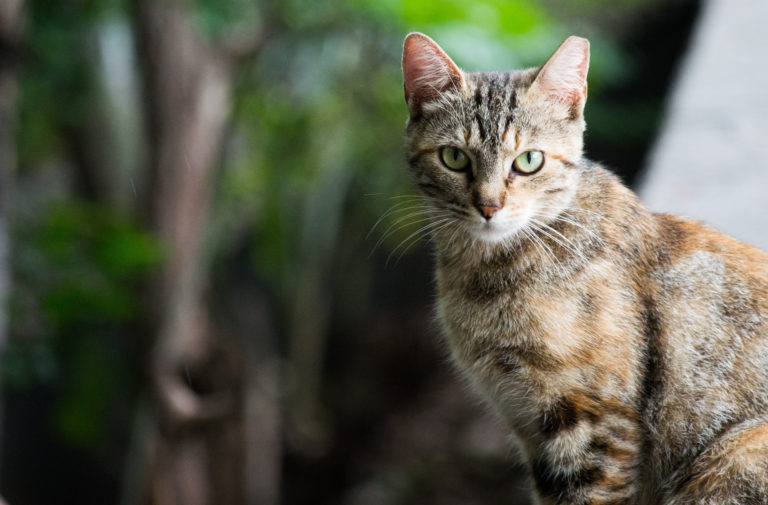
Trap-Neuter-Return
Trap-Neuter-Return, more commonly called TNR, is one of the only proven effective ways to humanely address cat overpopulation. TNR occurs when an organization such as the Humane Society of Greater Dayton sets traps in the community to catch unowned, community cats to spay or neuter them.
How it Works
- Trap – Unowned cats are humanely trapped in the community. This can occur by individuals or through organizations such as the Humane Society of Greater Dayton. Records are kept as to where each animal was trapped to ensure it is placed back in the proper location. Unowned, unidentified stray or feral cats are accepted into the program by city residents, city employees, or volunteers. However, you must schedule an appointment in advance for the surgery by calling (937) 965-4400.
- Neuter (Spay) – The unowned community cats are brought to our facility. Our veterinary team examines each cat for identification, health, age, and claw status prior to surgery. The community cats are then spayed (for female cats) or neutered (for male cats). This stops them from being able to reproduce. We vaccinate (rabies), treat for fleas, spay or neuter, and ear tip each cat. An ear tip is when the ¼-inch tip is removed from the cat’s left ear during surgery. Ear tipping is a universal sign of a community cat that has been spayed or neutered. By ear tipping a cat, it helps others identify this animal in the community, and if it ever gets trapped again, it can be released immediately.
- Return – Community or free-roaming cats who are healthy and have a clear food source will be returned to the location where they were caught. We look at many factors to ensure each cat is healthy before placing it back out into the community, including:
- They have claws.
- They are not kittens.
- They are not injured or sick.
- They are not senior cats who may struggle to survive.
- They are healthy and have a body mass, indicating that they have a regular food source.
Friendly, healthy cats and kittens may be eligible for our adoption program if space allows. We DO NOT euthanize stray, healthy, unidentified cats when our adoption program is full.
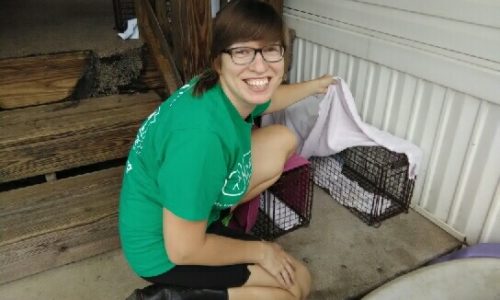
What is Offered in Your Community
To battle cat overpopulation, it is going to take all of us working together. We currently work with the majority of cities in our area to offer residents some sort of TNR program.
You can contact us to see what is available for where you live or contact your city officials. If we do not have an agreement with your particular city or township, we encourage you to speak with your city officials to encourage them to look more into a partnership with our organization.
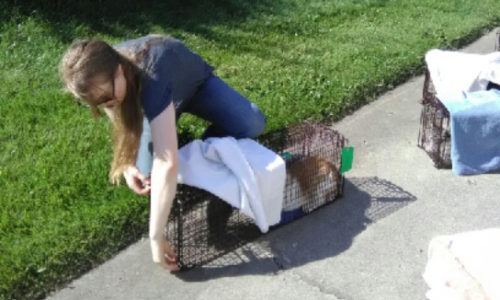
How Can You Rent a Trap?
For the safety of those trapping as well as the safety of our staff and the animals, we require all cats be brought to us using a live humane trap.
We offer trap rentals at our main shelter. To rent a trap just costs $1 per day. There is a deposit of $75 when you rent the trap, but that will be given back to you once the trap is returned.
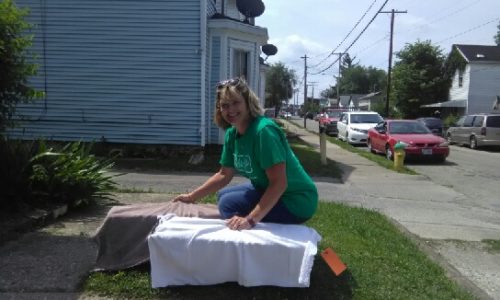
Schedule an Appointment
For availability and pricing, please contact us at (937) 965-4400 or click below to fill out an inquiry form. We will have someone reach out to you will additional information.
Trap-Neuter-Return FAQs
I found a friendly stray cat. What do I do?
Please view our Lost and Found pets page for more information on how to help lost pets.
What is the difference between a stray cat and a feral cat?
In general, the difference in appearance and behavior include:
- Stray Cats
- May approach you.
- May approach food right away.
- May be vocal.
- May look disheveled.
- May be seen at all hours of the day.
- Feral Cats
- Will not approach you.
- Will wait until you move away before approaching food.
- Will be silent.
- Will appear groomed.
- Usually nocturnal.
Why do you return trapped cats back to the community after you spay or neuter them?
When you remove a cat from the community, you are not eliminating the nuisance it can bring. The cat population (like other outdoor animal populations) rises to the level of a food source. That means that if there is more than enough food outside (mice, rats, birds, people feeding outdoor cats, etc.), cats increase their numbers. If there is not enough food, then the population decreases. The cat population, which is estimated to be roughly 50,000 in Montgomery County alone, seeks a balance with the amount of food available. Many have tried other methods to fix the cat overpopulation problem, such as through adoption or euthanasia. However, there is an “unclaimed” food source that still remains available. This is called the “vacuum effect.” With so many cats able to reproduce quickly (two litters per year, with four to six kittens per litter), their population number rebounds every breeding season. The only effective way to decrease the outdoor cat population responsibly is through sterilization (spays or neuters) of outdoor cats so these community cats can not reproduce and add to the overpopulation problem.
Will community cats suffer if they are returned where they were trapped?
Only cats that are thriving are returned to their environments. If the cat appears healthy and has good body condition, we know it has found a food source and shelter to thrive. For those that appear unable to return, we find alternative placement through programs such as our Working Cat Program.
What should I do if I find a cat that has a tipped ear?
A tipped ear indicates that the cat has already been spayed or neutered and vaccinated, so you can simply leave that cat alone. Ear-tipped cats that are surrendered will be returned to the community. If no ear tip is present, this cat is most likely not spayed or neutered. You can help by participating in the Humane Society of Greater Dayton’s Community Cat Initiative program to get the cat spayed or neutered and vaccinated for rabies.
What are the benefits of spaying or neutering a cat?
Benefits to the cat:
- Reduces the incidences of infection and tumors in cats.
- Lowers the wandering, aggression, and territorial behaviors associated with a cat being in heat.
Benefits to you:
- Lowers the number of unwanted litters in your community.
- Lessens noise complaints from stray cats yowling due to mating season.
What about the cold winters? Won’t these cats be in danger?
It is hard for any of us to imagine an animal out in the cold, bitter temperatures of winter. However, we know that cats have adapted and managed to survive in our community year-round. Similar programs to our Trap-Neuter-Return have been implemented in all types of climates across the U.S. and Canada. To help battle some of the cold weather, our staff and volunteers make cat shelters to distribute to cat colonies throughout the community. Learn how you can volunteer to help make these by emailing us at volunteer@hsdayton.org.
How can I help?
Volunteer! Cat overpopulation is not an organizational issue. It is a community-wide issue. Please consider volunteering your time to our program. If you can’t give your time, please consider giving a monetary donation to help with our program’s supplies and resources. As a 501(c)(3) nonprofit, your generosity helps fund 100 percent of our programs and services. You can also donate in-kind items to the program, including:
- Pet carriers.
- Havahart live animal traps.
- Disposable dishes.
- Gently used large towels.
- Canned cat food.
- Tarps.
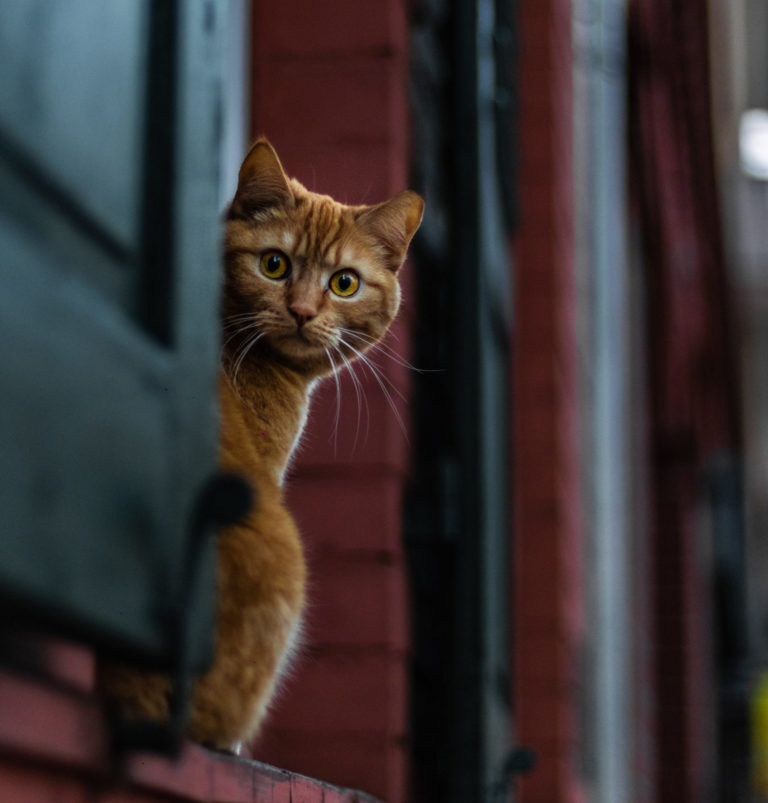
Working Cat Program
Through the Working Cat Program, the Humane Society of Greater Dayton works with individuals and companies to place unsocialized cats into non-traditional homes. These cats are mostly feral or semi-feral and do not do well in a home environment, but they are still wonderful and healthy cats.

